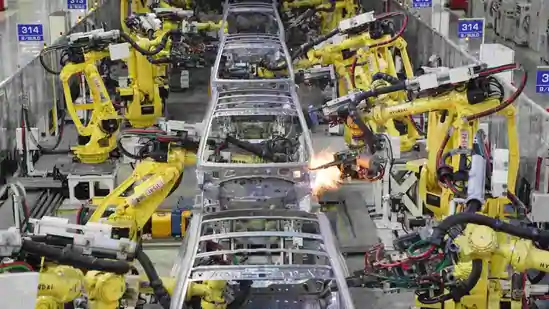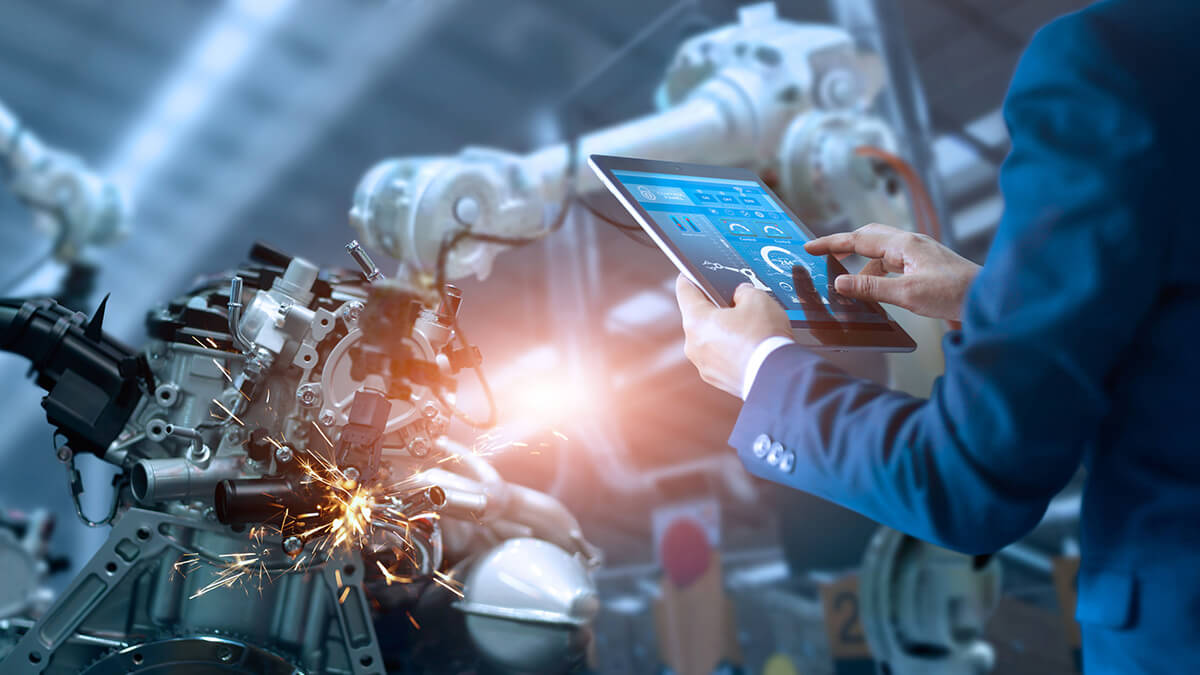Production Linked Incentive Scheme - Major Boost to Local Manufacturing

Considering the National Industrial Classification, there are 24 sub-categories in the Indian manufacturing sector. These categories comprise motor vehicles, beverages, textiles, chemicals, food products, electrical equipment, computer, furniture, and electronic products, among others. It is expected that India's manufacturing sector is anticipated to show strong growth over the past few years. Moreover, the sector's Gross Value Added (GVA) at current prices was estimated at US$ 397.14 billion in FY2020 with 0.3% Y-o-Y growth.
In November 2020, the Indian government publicized the "Production Linked Incentive Scheme", worth Rs. 145,980 crores (US$ 19.7 billion) incentives to attract companies to established manufacturing plants in the local market. The production linked incentive will be accessible to 10 sectors: automobile and automobile components, telecom, textiles, drug manufacturing, food, white goods like air conditioners and LEDs, advanced chemistry cell batteries, specialty steel, electronics, and solar photovoltaic modules, and textile. Under the scheme, cash subsidies will be offered to companies as a percentage of incremental sales from the base year (the year when the scheme comes into effect). The incentive rate will depend on each sector's 'disadvantage' in domestic manufacturing and vary from sector to sector.
The Union Cabinet, led by the honorable Prime Minister, Shri Narendra Modi, has revealed the Production Linked Incentive (PLI) Scheme in the following ten critical sectors for Enhancing India's Manufacturing Capabilities and Enhancing Exports under the tagline of "Atmanirbhar Bharat."
|
Priority |
Sectors |
Implementing Ministry/Department |
Approved financial outlay over five years (INR Crore) |
|
1 |
Advance Chemistry Cell (ACC) Battery |
NITI Aayog and Department of Heavy Industries |
18,100 (US$ 2,400 million) |
|
2 |
Electronic/Technology Products |
Ministry of Electronics and Information Technology |
5,000 (US$ 674.9 million) |
|
3 |
Automobiles & Auto Components |
Department of Heavy Industries |
57,042 (US$ 7,700 million) |
|
4 |
Pharmaceuticals drugs |
Department of Pharmaceuticals |
15,000 (US$ 2,020 million) |
|
5 |
Telecom & Networking Products |
Department of Telecom |
12,195 (US$ 1,600 million) |
|
6 |
Textile Products: MMF segment and technical textiles |
Ministry of Textiles |
10,683 (US$ 1,400 million) |
|
7 |
Food Products |
Ministry of Food Processing Industries |
10,900 (US$ 1,500 million) |
|
8 |
High-Efficiency Solar PV Modules |
Ministry of New and Renewable Energy |
4,500 (US$ 607.5 million) |
|
9 |
White Goods (LED & ACs) |
Department for Promotion of Industry and Internal Trade |
6,238 (US$ 842.09 million) |
|
10 |
Specialty Steel |
Ministry of Steel |
6,322 (US$ 853.4 million) |
|
|
Total |
145,980 (US$ 19,700 million) |
|
The above will be in addition to the already notified Production Linked Incentive Scheme in the following sectors:
|
|
Sectors |
Implementing Ministry/Department |
Financial outlays (US$ million) |
|
1 |
Mobile Manufacturing and Specified Electronic Components |
MEITY |
5,687 |
|
2 |
Critical Key Starting materials/Drug Intermediaries and Active Pharmaceutical Ingredients |
Department of Pharmaceuticals
|
963 |
|
3 |
Manufacturing of Medical Devices |
475 |
|
|
Total |
7,126 |
||
The clarion call for an 'AatmaNirbhar Bharat' envisions policies for promoting an equitable, efficient, and resilient manufacturing sector locally. The rise in production and exports of industrial goods will broadly enhance the Indian industry's position in the global market. It is also expected that it will improve the company's position in terms of foreign competition and innovation, which will result in improving its capabilities to innovate further. The manufacturing sector's promotion is creating a conductive manufacturing ecosystem, which will enable integration with global supply chains and establish backward integration with the MSME sector in India. It will also lead to overall growth in the economy and create substantial employment opportunities in the country.
Considering the current schemes, the Indian government must enlighten and provide incentive schemes for the service industry. This sector showed a strong point as far as revenue and employment generation. But, it rarely enjoys any government incentive.
At present, the production linked incentive scheme is well-equipped to increase investments, add domestic value, generate employment, build capacity, and innovate to make India self-sufficient in local manufacturing. However, the scheme's success will come in the next few years, whether the scheme faces any challenges.
India has significant adequate economic and untapped potential opportunities in each of 24 categories across many sectors. These sectors have been carefully selected keeping in mind the need for job creation in the country and these sectors' potential to achieve significant global growth and attract international players. More specifically, the production linked incentive scheme was announced to boost domestic manufacturing and attract foreign investments in the three sectors of medical devices, pharmaceuticals, and large-scale electronics manufacturing. Also, it aimed to decrease the import dependence of the respective sectors.
The production linked incentive scheme introduced by the Ministry of Electronics and Information Technology (MEITY) projected financial incentives to boost competitiveness and invite more significant investments in the electronics value chain, including semiconductor packaging and electronic components sectors. The target products for the scheme were mobile phones. The specified electronic components that were eligible for incentives of 4% to 6% on incremental sales (over the base year of the financial year 2019-20) of goods manufactured in India to eligible companies for five years, subsequent to the base year.
Accordingly, the Department of Pharmaceuticals came out with two production linked incentive (PLI) schemes and promoted domestic manufacturing of critical Drug Intermediates, Active Pharmaceutical Ingredients (API), and Key Starting Materials (KSM). The scheme was approved for bulk drugs and pharmaceuticals to give a fillip to domestic medical devices manufacturing and the Indian pharmaceutical industry and attract more significant investments. The sector's immense potential to achieve substantial growth becomes a global manufacturer.
Expecting Results from Production Linked Incentive Scheme
The production linked incentive scheme was aimed to increase India's global share in the medical devices and pharmaceuticals industry while reducing high import dependency on critical APIs and medical devices.
The Indian Government would expect to extend an incentive of 5% on incremental goods sales produced in India and covered under target segments to eligible companies for five years. The scheme and the guidelines were later revised and modified, keeping in suggestions and comments from industry experts to ensure the industries' effective participation.
Ensuring the scheme's resounding success in these sectors, the scheme has now been extended to 10 more sectors to boost production and make the manufacturers globally competitive by creating economies of scale and improving these sectors' efficiencies. This is expected to fuel India's exports and make India an integral part of the global value chain.
Under the current scheme, various domestic and foreign companies will receive financial incentives to set up manufacturing units and produce in India. The scheme will help create an enabling manufacturing ecosystem that will establish backward linkages and promote the micro, small and medium enterprises (MSMEs) sector. This, in turn, will boost India's growth and economic prospects and significantly improve the country's employment opportunities.
The successful implementation of the scheme, which will provide incentives and targeted strategies to promote the ten champion sectors, would make India a global destination for manufacturing in the post-Covid-19 world.











